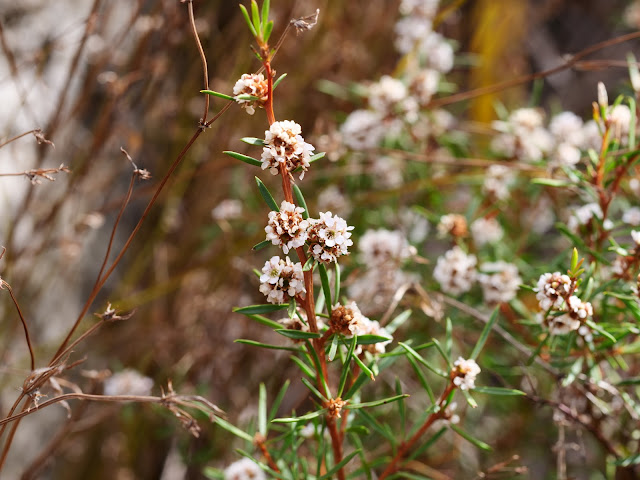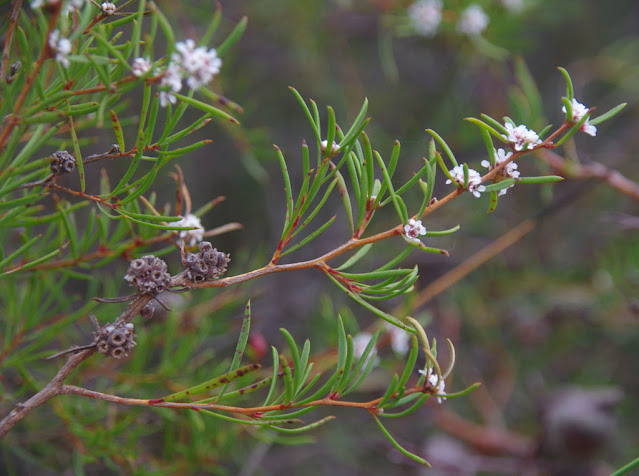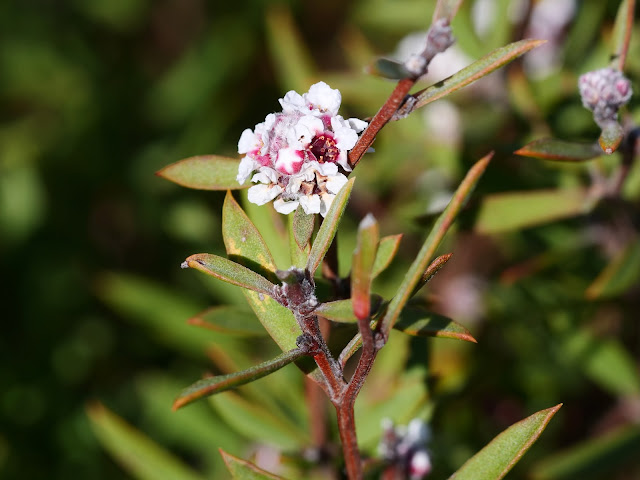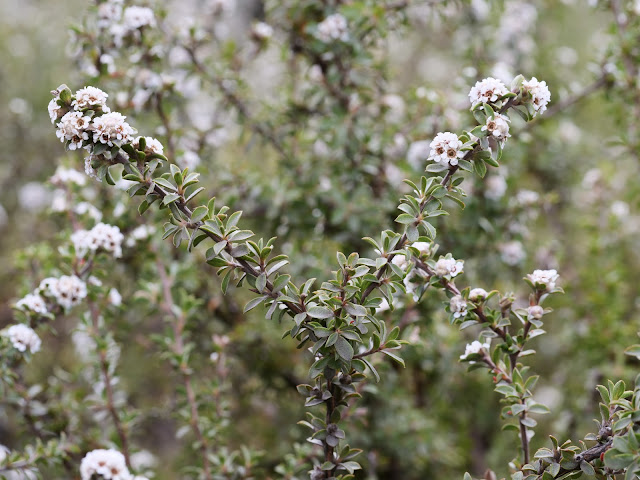Taxandria
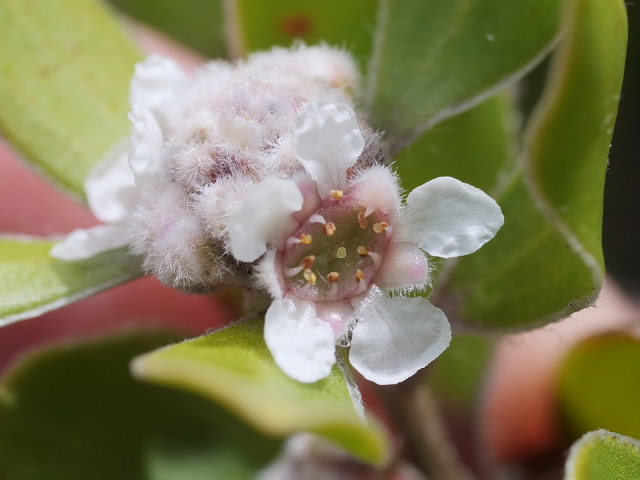
There are eleven species of Taxandria all endemic to the south-west of Western Australia. One species, conspicua, is divided into two subspecies. They are usually shrubs but two species, T. parviceps and T. linearifolia grow into very small trees and T. juniperina can grow into quite a large tree (over 20 m tall). Flowers are in heads, generally globular. The most noticeable feature of the flowers, which may require a magnifying glass (or phone magnifying app) to see, is there are ten stamens, one opposite each petal and sepal. The use of the word opposite confused me when I was first looking at this genus and to the non-botanist could perhaps be better described as 'next to' as there is one stamen by each petal and sepal. The name taxandria is derived from the Latin tax - ordered and andrus - male and refers to this orderly stamen arrangement. The fruit, like the flower heads, are in clusters, generally globular, each fruit having three valves. Taxandria marginata flower showi...
